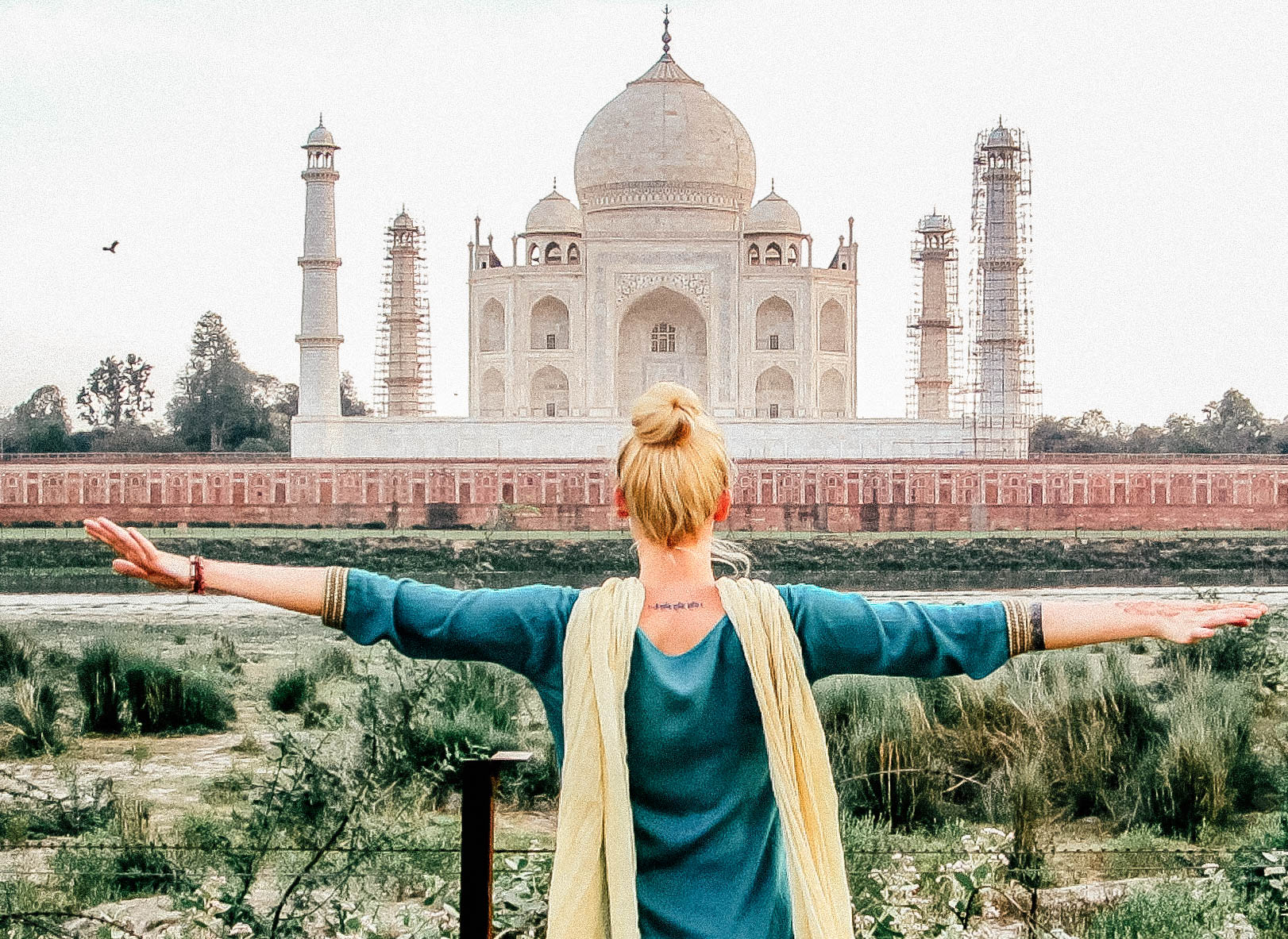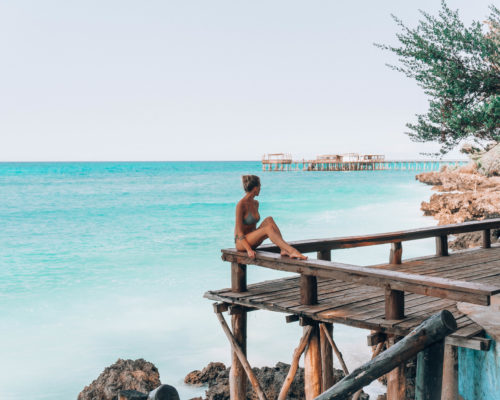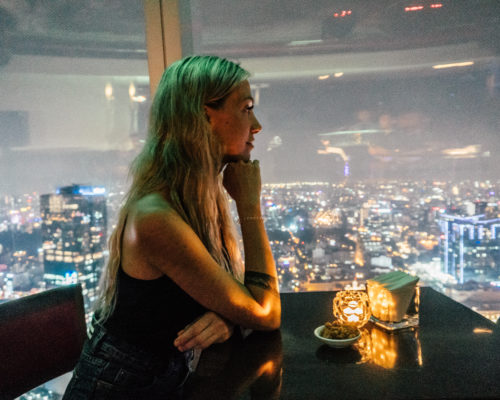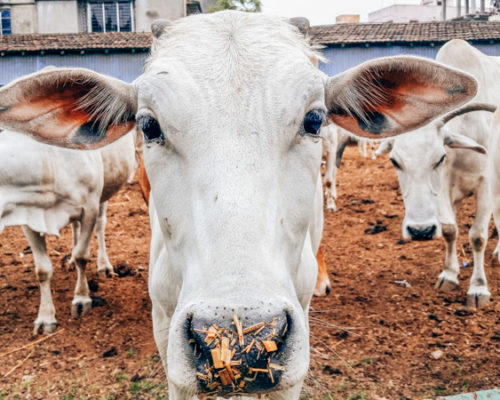Agra- everything in this city centers on the Taj Mahal. Probably everyone who thinks of India also thinks about the Taj Mahal, UNESCO Worldheritage, one of the new seven wonders of the world, beautiful and unique. I always wanted to go there and when the moment was finally there, I was super excited. Quite rightly one of the seven wonders of the world! It took my breath away, I got goose bumps when I finally saw the Taj Mahal through the gate!
A romantic story is a reason why especially couples who are in love visit the Taj Mahal, the story of the love between Mumtaz Mahal and Shah Jahan, an Indian Mughal emperor. Mumtaz Mahal died when she gave birth to her 14th child, and it is said that on her deathbed she expressed her wish for a unique tomb, one that the world had never seen before. Shah Jahan, who found it hard to bear the death of his loved one, devoted himself to fulfill the wish of Mumtaz Mahal from then on.
A romantic story is a reason why especially couples who are in love visit the Taj Mahal
Eine romantische Geschichte treibt insbesondere verliebte Pärchen zum Taj Mahal
Agra- alles dreht sich in dieser Stadt um das Taj Mahal. Wahrscheinlich jeder, der an Indien denkt, denkt auch an das Taj Mahal, UNESCO Weltkulturerbe, eines der neuen sieben Weltwunder, wunderschön und einzigartig. Ich wollte schon immer mal hin und als es endlich soweit war, war ich super aufgeregt. Zu Recht eines der sieben Weltwunder! Mir stockte der Atmen, ich bekam eine Gänsehaut als ich endlich den Taj Mahal durch das Tor erblickte!
Eine romantische Geschichte treibt insbesondere verliebte Pärchen zum Taj Mahal, die Geschichte von der Liebe zwischen Mumtaz Mahal und Shah Jahan, einem indischen Großmogul. Mumtaz Mahal starb bei der Geburt ihres 14. Kindes, und man erzählt sich, dass sie noch auf dem Sterbebett ihrem Gatten den Wunsch geäußert habe, sich ein einzigartiges Grabmal zu wünschen, eines, dass die Welt so noch nicht gesehen hatte. Shah Jahan, der den Tod seiner Liebsten nur schwer ertragen konnte, widmete sich von da an der Erfüllung des Wunsches von Mumtaz Mahal.
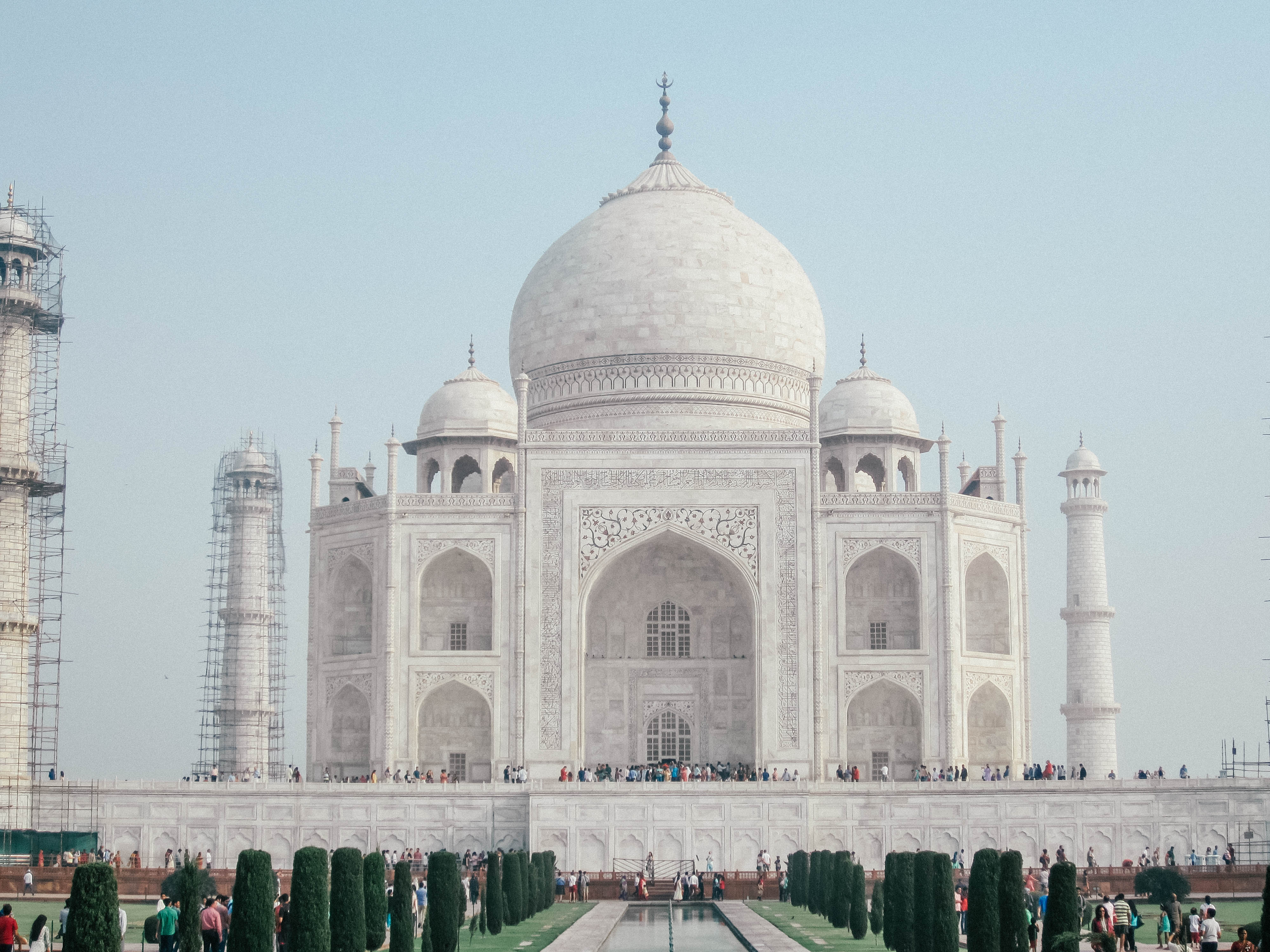
The construction of the Taj Mahal began shortly after Mumtaz’s death, the materials were transported from all over Asia to Agra with 1,000 elephants. The Taj Mahal is made of the finest white marble and is decorated with various gemstones. The architecture is influenced by Persian and Indian elements, and many places – such as the entrance – are framed and decorated with verses from the Koran.
Der Bau des Taj Mahal begann kurz nach Mumtaz’ Tod, die Materialien wurden aus ganz Asien mit 1.000 Elefanten nach Agra geschafft. Das Taj Mahal besteht aus feinstem weißen Marmor und ist verziert mit verschiedenen Edelsteinen. Die Architektur ist geprägt von persischen und indischen Elementen, und viele Stellen – wie beispielsweise der Eingang – sind umrahmt und verziert mit Koranversen.

One must not disregard what it meant at that time to build a mausoleum like the Taj. More than 20,000 people were involved in the construction, who worked for 17 years on the construction of the Taj Mahal. The construction of the Taj Mahal cost a fortune. The consequences were riots and troubles against Shah Jahan. However, Jahan prevailed and so the Taj Mahal was completed in 1648. In 1657 his power was taken by a coup, initiated trough his own son. Shah Jahan was then taken as a prisoner to the Red Fort in Agra, which is located directly across from the Taj Mahal. When Shah Jahan died in 1666, he was buried next to his wife. Now many of you may think that this was a romantically part of the plan of Shah Jahan, but that was not the case…
Nicht außer Acht lassen darf man, was es zu der Zeit bedeutete, ein Mausoleum wie das Taj zu bauen. Am Bau waren über 20.000 Menschen beteiligt, die 17 Jahre am Bau des Taj Mahal arbeiteten. Der Bau des Taj Mahal kostete ein Vermögen. Folgen waren Aufstände und Unruhen, die sich gegen Shah Jahan richteten. Jahan konnte setzte sich jedoch durch und so wurde das Taj Mahal 1648 fertig gestellt. 1657 wurde er Shah Jahan von seinem eigenen Sohn vom Thron geputscht und wurde als Gefangener in das Rote Fort nach Agra gebracht, welches sich direkt gegenüber vom Taj Mahal befindet. Als Shah Jahan 1666 starb, wurde er neben seiner Gattin begraben. Viele mögen an dieser Stelle romantisch denken, dass dies der Plan von Shah Jahan gewesen sei, was allerdings nicht so war…
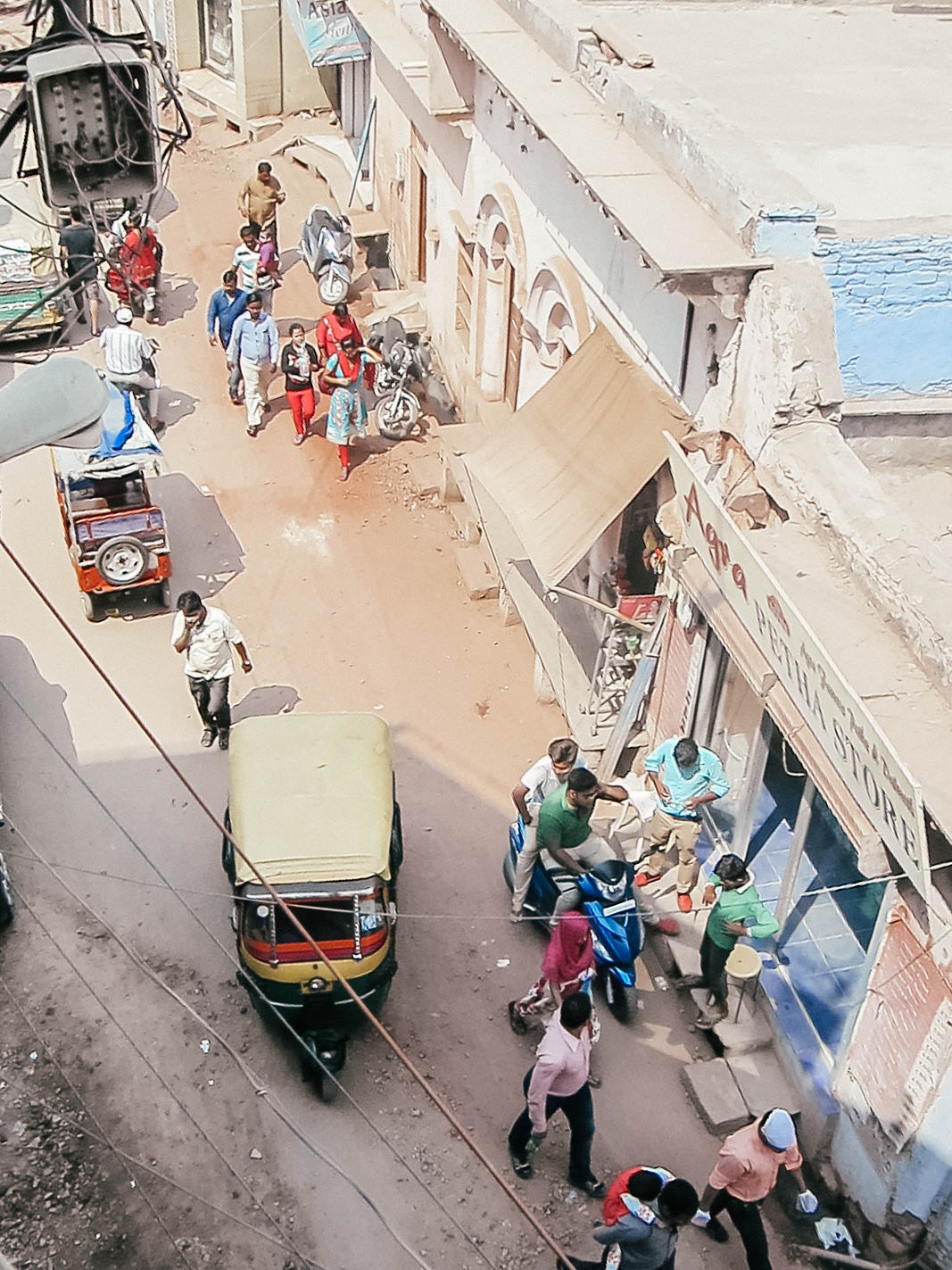
According to legend, Shah Jahan wanted to build his own mausoleum to be a replica of the Taj Mahal, but on the other side of the Yamuna River, made of black marble. If you look at the tombs in the Taj Mahal, you see that it was not intended to have two tombs next to each other, as it destroys the symmetry that is everywhere else in the Taj Mahal.
Die Legende besagt nämlich, dass Shah Jahan sich ein eigenes Mausoleum bauen lassen wollte, dass ein Ebenbild des Taj Mahal sein sollte, jedoch auf der anderen Seite des Yamuna Flusses, aus schwarzem Mamor. Wer sich die Gräber im Taj Mahal anschaut sieht, dass es nicht beabsichtigt gewesen ist, dass sich dort zwei Gräber nebeneinander befinden, da damit die Symmetrie zerstört wird, die im Taj Mahal ansonsten überall vorhanden ist.
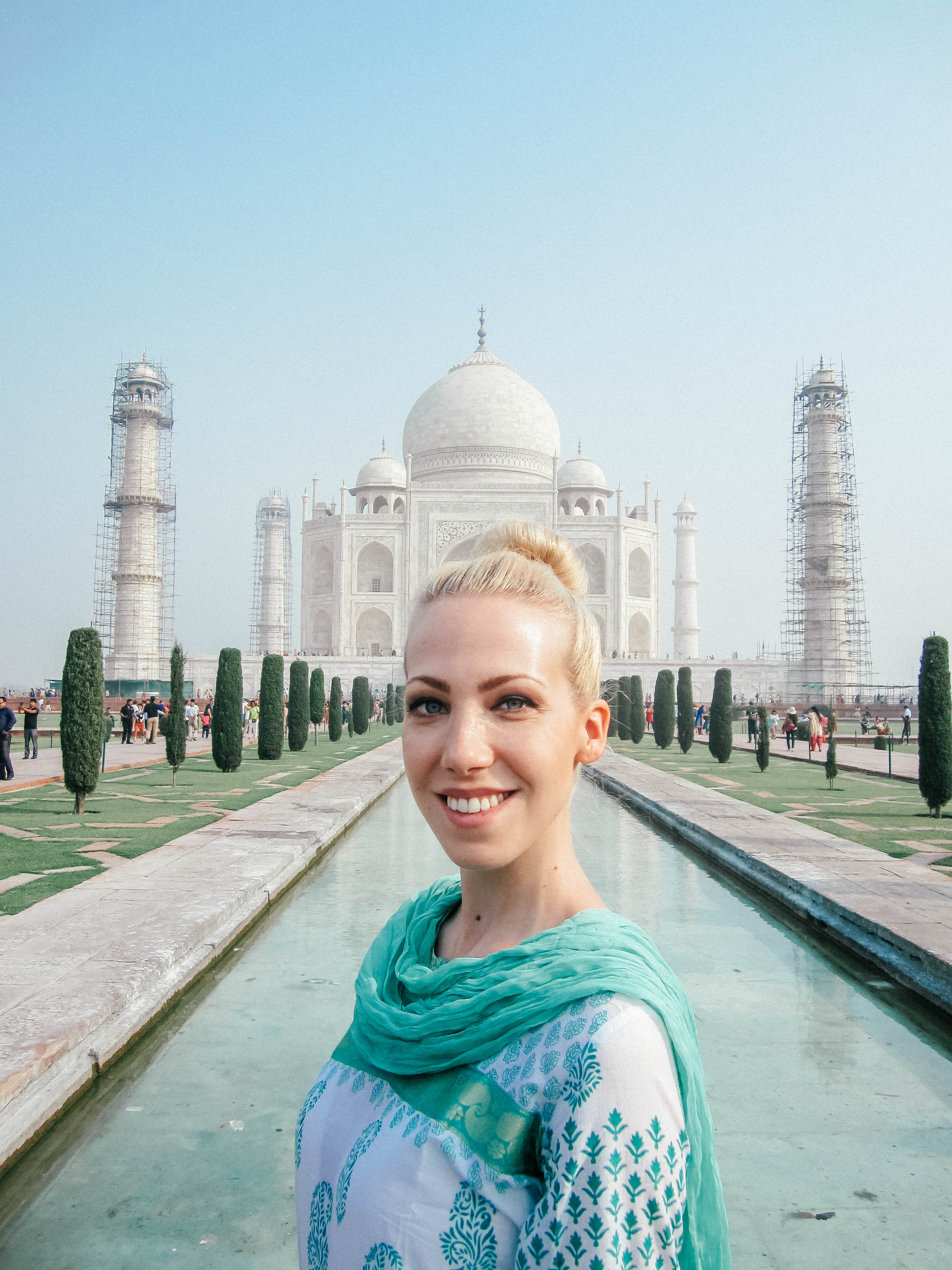
And now a few tips! Come early, and I mean very early! For several reasons: you want to experience the Taj Mahal with as few people as possible (which is almost impossible) and for that, you have to be there early. There are three entrances, east, west and south. It doesen’t matter where you go in, every entrance leads straight through the gate with a great view of the Taj Mahal. At each entrance there is a ticket counter, the east and west side ticket corner open at around 6 o’clock, the south entrance at 8 o’clock. The entrance fee for tourists is 750 Rupees per person. The other reason why it is worth getting there early is that the light at dawn is absolutely magical. In addition, it is cooler in the morning than in the afternoon, so definitely better!
Und nun noch ein paar Tips! Kommt früh, und damit meine ich sehr früh! Aus mehreren Gründen: Ihr möchtet das Taj Mahal erleben mit so wenig Menschen wie möglich (was fast unmöglich ist), und dafür müsst ihr früh da sein. Es gibt drei Eingänge, Ost-, West- und Südseite. Es spielt keine Rolle, wo ihr nachher reingeht, alle führen direkt durch das Tor mit der tollen Sicht auf das Taj Mahal. An jedem Eingang gibt es einen Ticketschalter, an der Ost- und Westseite öffnet dieser etwa gegen 6 Uhr, am Südeingang erst um 8 Uhr. Der Eintritt für Touristen kostet 750 Rupie pro Person. Der andere Grund, warum es sich lohnt früh dort zu sein ist der, dass das Licht im Morgengrauen besonders magisch ist. Außerdem ist es morgens kühler als Nachmittags, also definitiv besser!
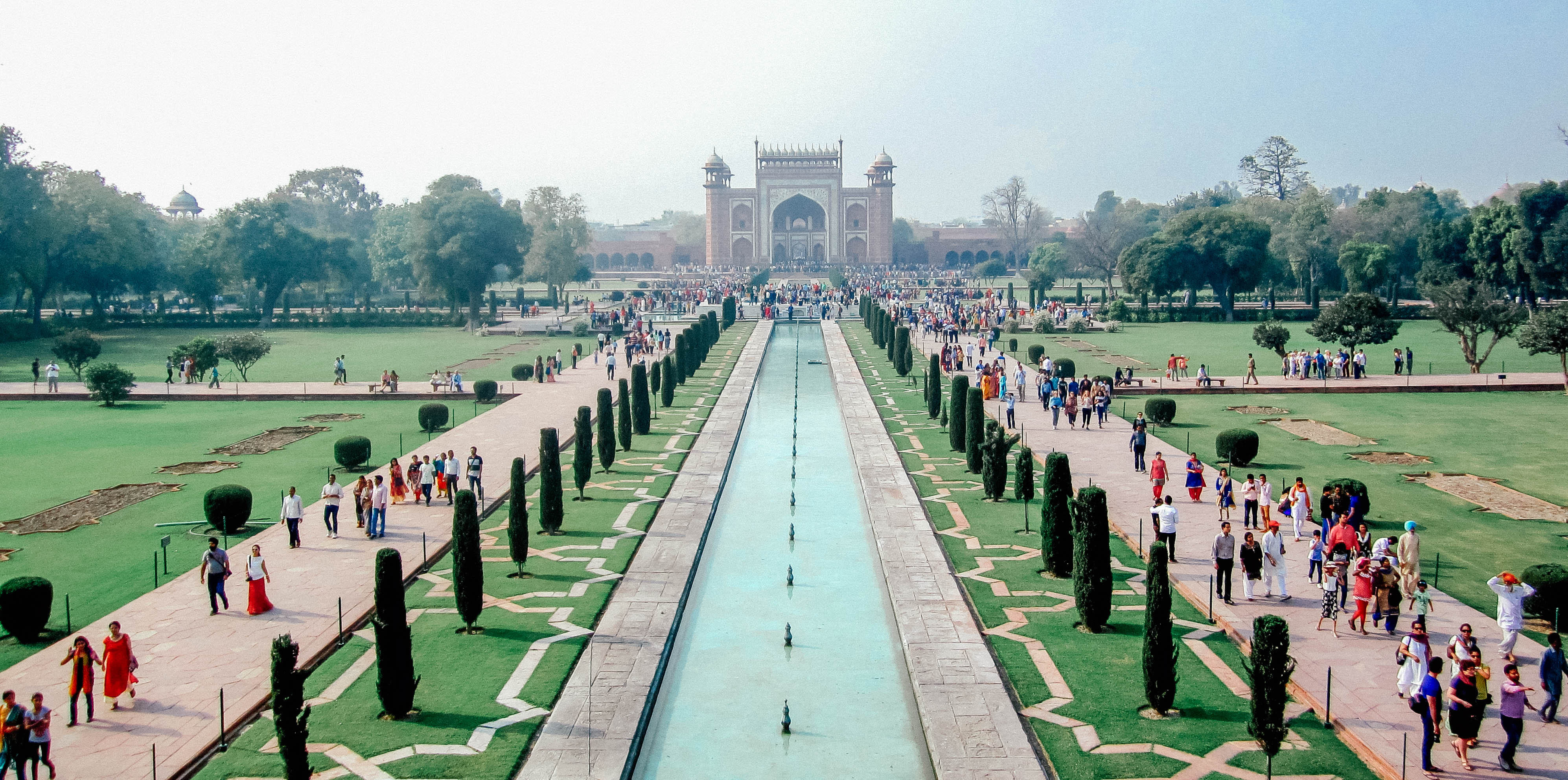
Here you can see the main gate that you go through, on this picture the Taj Mahal is behind me. As you can see, in front of the Taj Mahal is an 18-acre garden with an elongated water basin in the center, the place where a lot of people take photos with the Taj Mahal in the background.
Hier sieht man das Haupttor durch dass man geht, das Taj Mahal befindet sich auf diesem Bild hinter mir. Wie man sehen kann liegt vor dem Taj Mahal ein 18 Hektar großer Garten mit einem länglichen Wasserbecken im Zentrum, vor dem sich viele mit dem Taj Mahal im Hintergrund fotografieren lassen.
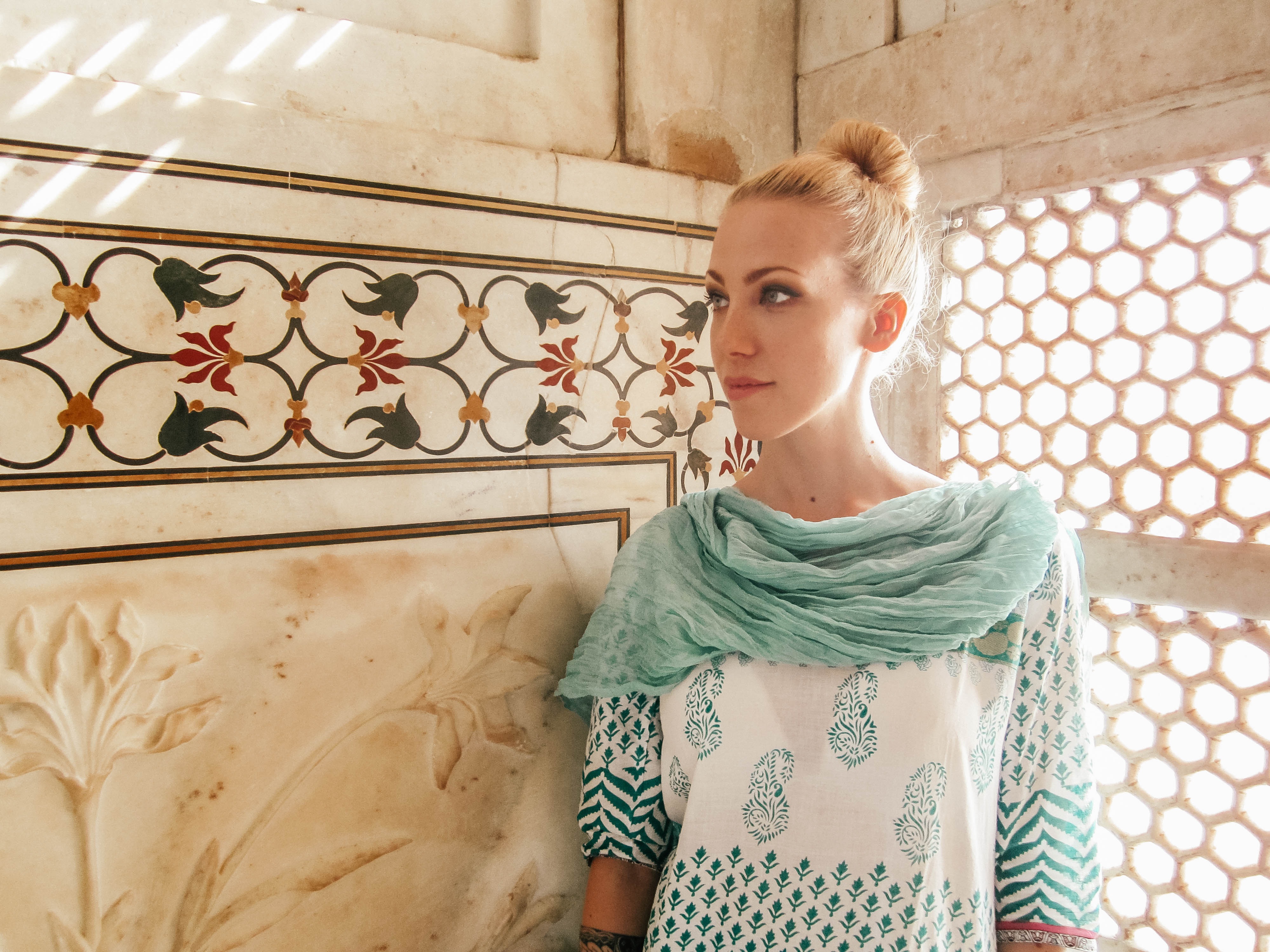
By the way, it is not allowed to take pictures in the Taj, I noticed this after I took this picture 😀
Im Taj zu fotografieren ist übrigens nicht erlaubt, stellte ich nach diesem Foto fest 😀


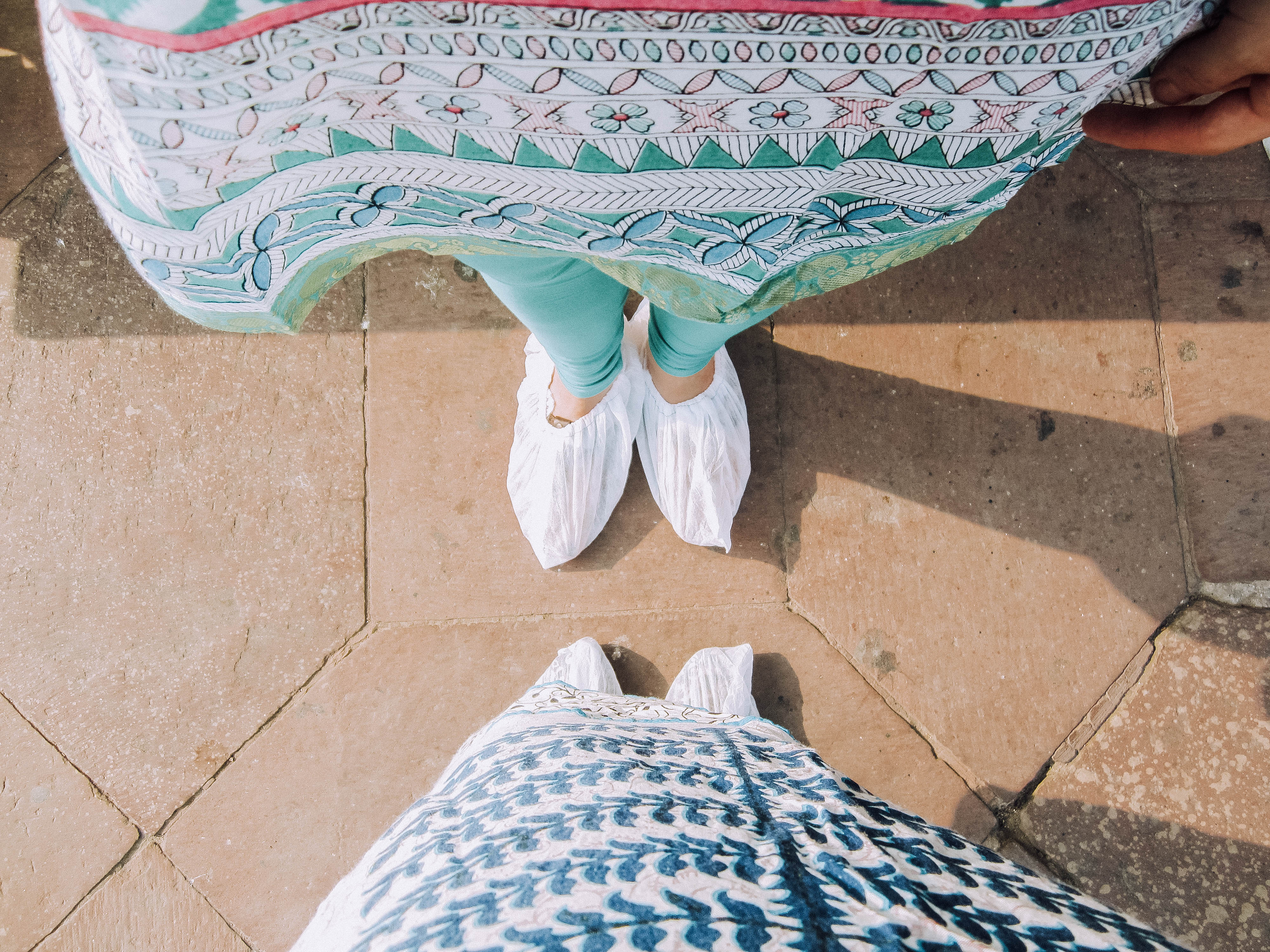
These overcoats serve to protect and preserve the Taj Mahal and are an absolute must.
Diese Überzieher dienen zu Schutz und Erhalt des Taj Mahal und sind absolute Pflicht.

This famous bank …. you can not imagine how difficult it was to take a picture there. There are photographers who take pictures of couples and families and who of course, let their customers take the lead instead of someone like me, who is traveling with her own camera. But at some point I just jumped the queue, also something that you absolutely have to learn in India.
Diese berühmte Bank…. ihr könnt euch nicht vorstellen, wie schwierig es war, dort ein Foto zu machen. Es gibt dort Fotografen, die Fotos von Pärchen und Familien machen und dementsprechend natürlich auch ihren Kunden den Vortritt lassen, anstatt jemandem wie mir, die mit ihrer eigenen Kamera unterwegs ist. Aber ich habe mich einfach irgendwann dazwischen gedrängelt, auch etwas, dass man in Indien unbedingt lernen muss.
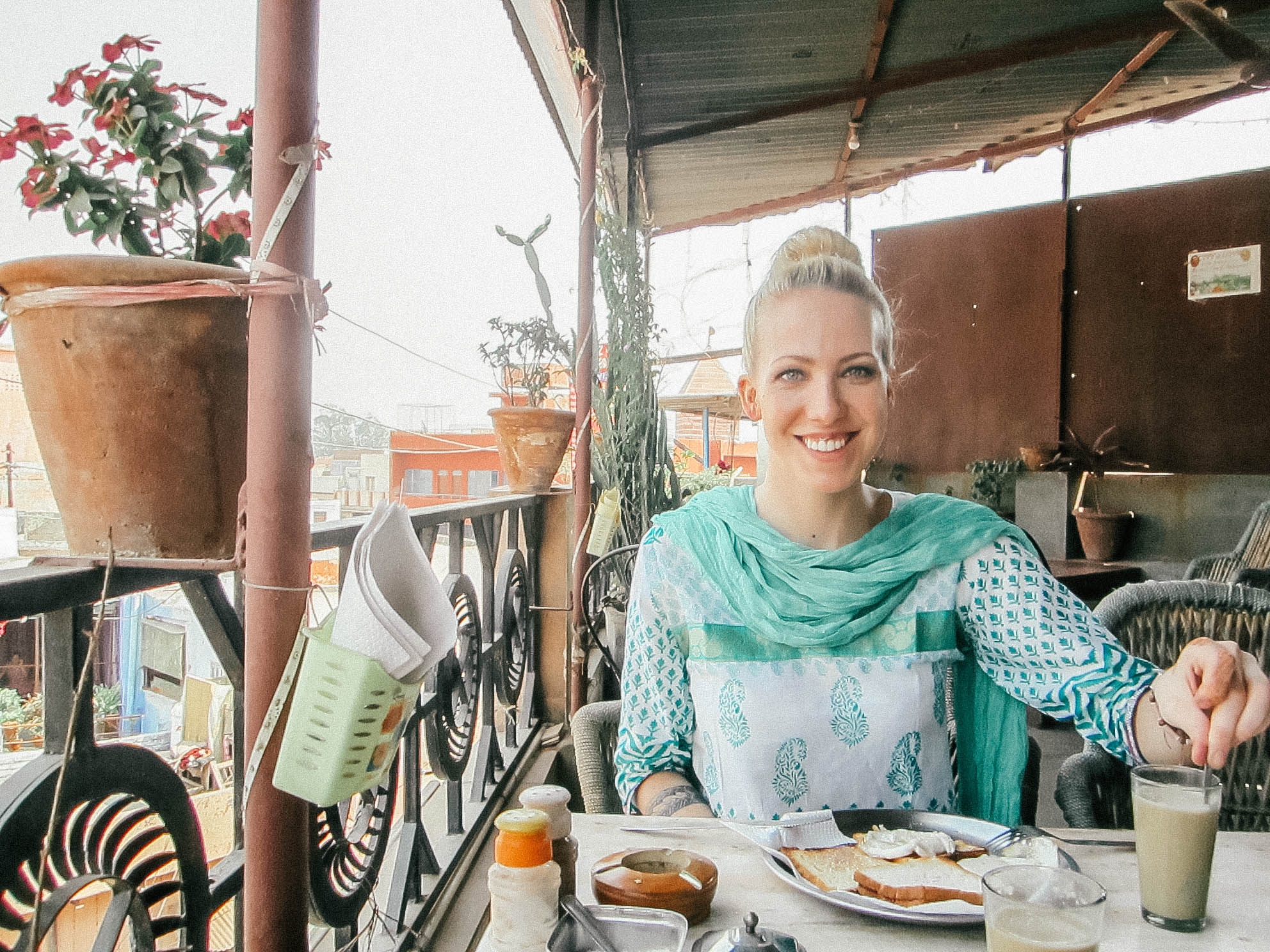
The first breakfast after sightseeing in the Taj Mahal. What I can tell you is: buy something to eat the day before! I thought that something would be open early in the morning, but of course I was wrong. The only thing you can buy on the way to the Taj Mahal is hot chai tee, so at least I could consume something. Have a good breakfast (probably the kitchen of your accommodation will be closed), because the Taj Mahal and the many people can also be exhausting 🙂
Das erste Frühstück nach der Besichtigung im Taj Mahal. Was ich euch sagen kann ist: Kauft euch etwas zu essen, am Tag davor! Ich habe mir gedacht, dass schon irgendetwas am frühen morgen offen sein wird, aber da lag ich natürlich falsch. Das einzige, was ihr auf dem Weg zum Taj Mahal kaufen könnt ist, heißer Chai, so konnte ich wenigstens etwas zu mir nehmen. Frühstückt also gut (wahrscheinlich wird die Küche eurer Unterkunft auch noch geschlossen sein), denn der Taj Mahal und die vielen Menschen können auch anstrengend sein 🙂
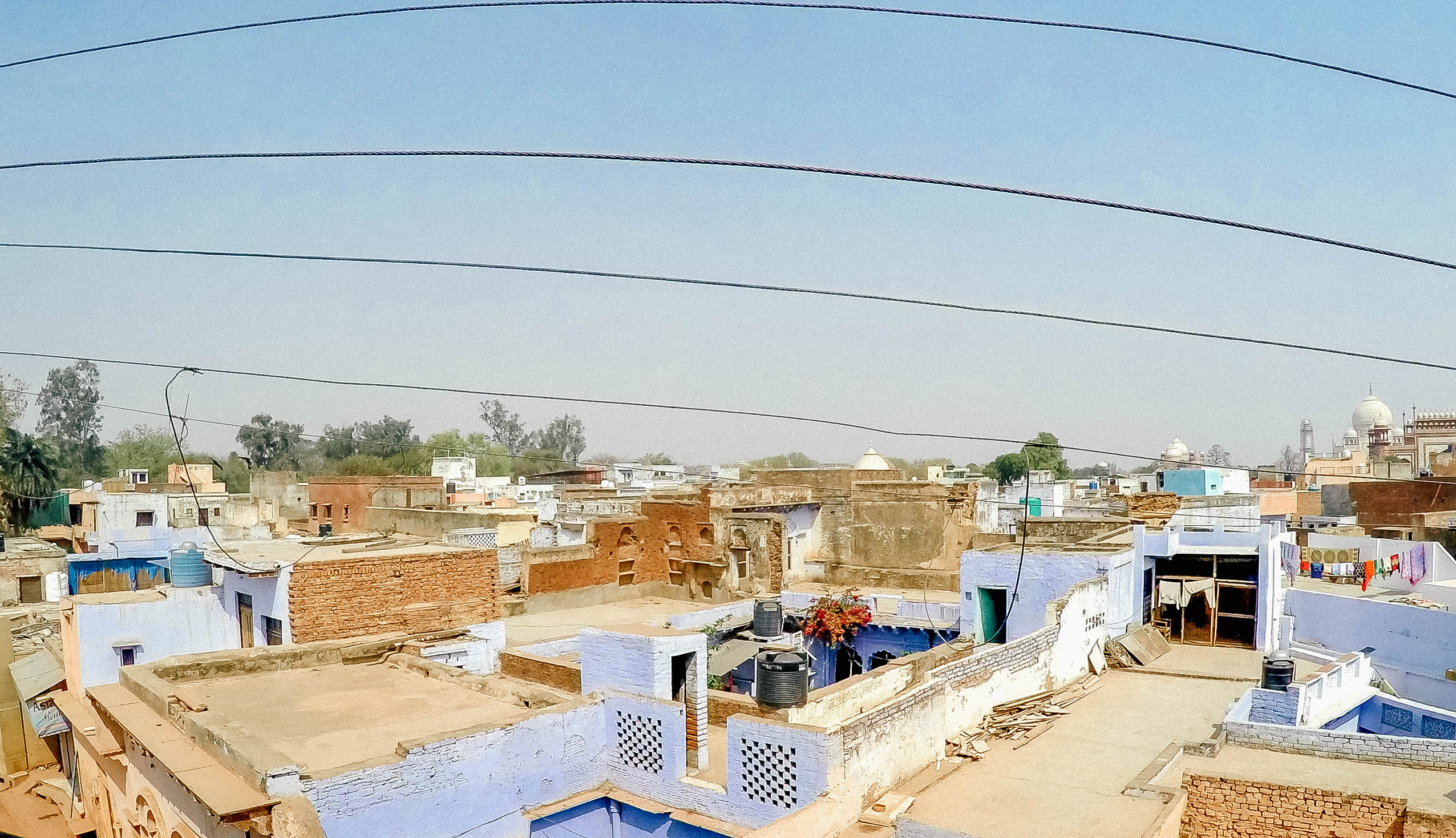
Aussicht auf die Dächer von Agra und ganz links, der Taj Mahal.
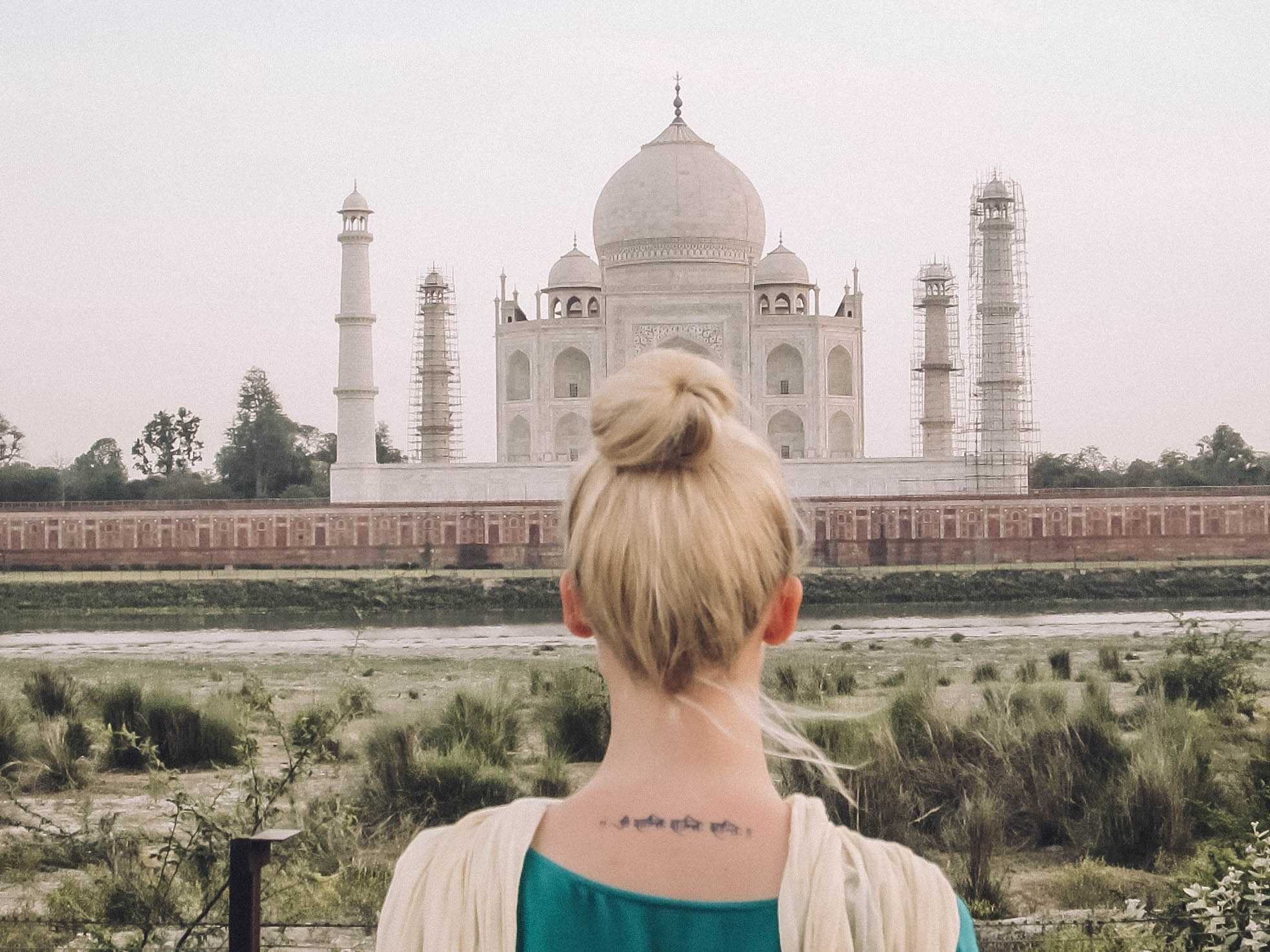
I also recommend to see the Taj in the evenings. The best way to do this is from the Mehtab Bagh moonlight garden. The garden is super nice for just relaxing and watching the Taj Mahal, what more could you ask for?!
Ich kann außerdem empfehlen, den Taj in den Abendstunden zu betrachten. Am besten kann man dies vom Mehtab Bagh – Mondscheingarten tun. Der Garten ist super schön zum einfach relaxen und den Taj Mahal zu beobachten, was will man auch mehr?!


